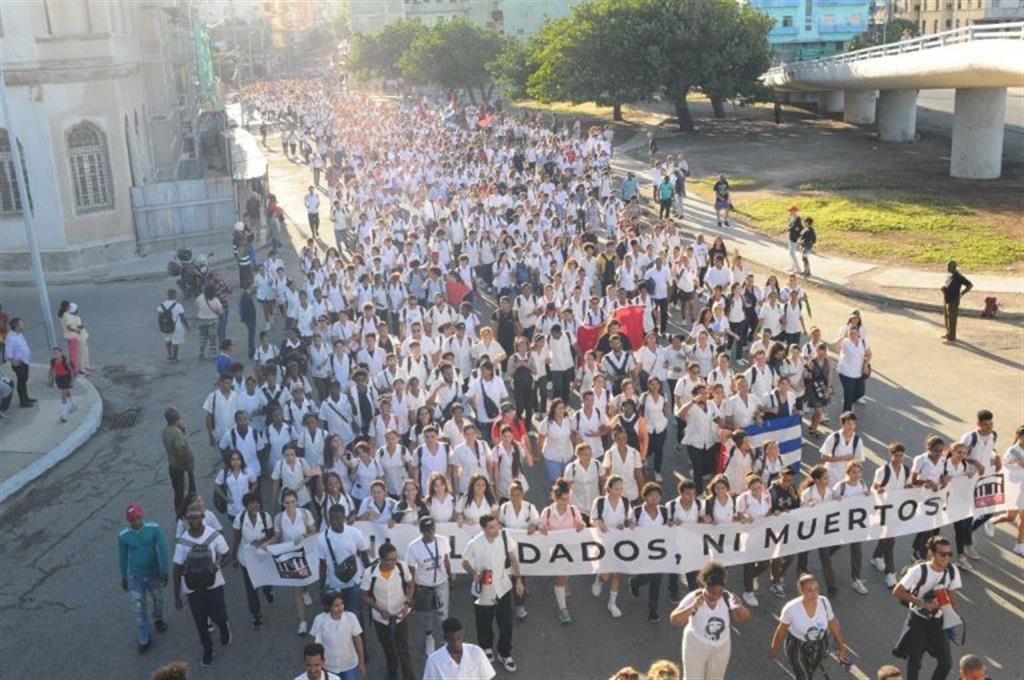Young university students are part of the Cuban people who “are and will remain standing and fighting, alongside President Díaz-Canel,” FEU President Ricardo Rodríguez stated.
At the commemorative event of the 153rd anniversary of the shooting of eight medical students by Spanish colonialism, Rodríguez noted that the head of State “is continuity in the people of Fidel and Raúl Castro (leaders of the Cuban Revolution).”
This is the same people “who were shocked and took to the streets after the assassination of those students… let no one forget it, the same people who did not hesitate to mobilize in solidarity with those affected by Hurricanes Oscar and Rafael.”
The university leader pointed out that Cuban youths would not give in to those who “intend to subdue us and deliver us to the immoral and anti-Marti condition of servility.”
Rodríguez added that Cuban youths have the “moral and human obligation” to condemn the United States blockade against Cuba and any genocide in the world, including the one perpetrated by Israel against the people of Palestine.
“The deaths of our brothers there (in Gaza), victims of neo-fascist barbarism, bleeds us as much as the deaths of our brothers here at the hands of Spanish colonialism,” he noted.
His speech was the prelude to the pilgrimage of thousands of young people from the steps of the University of Havana to the monument that recalls the vile murder. The march was led by Díaz-Canel himself.
On November 23, 1871, a group of first-year medical students was waiting for their professor in the anatomical amphitheater next to the Espada Cemetery, in Havana.
According to historical research, they dispersed through the cemetery, some rode around on the wheelbarrow there, another plucked a flower and the rest played among themselves. Later, Spanish authorities accused them without proof of desecrating the grave of Spanish journalist Gonzalo Castañón.
This event occurred amid a tense historic context due to the increasing defeats of the Spanish Army at the hands of the leaders of the war of independence who had been fighting them since 1868 in eastern Cuba.
In the first court martial, the innocence of the young men was demonstrated; however, due to the pressure of the Spanish Volunteer Corps in Havana, the young men were sentenced to death in a second trial as a warning.
In order to complete the list with eight students, three of them were chosen in a draw that included a 17-year-old student from the city of Matanzas who was not in Havana on the day of the alleged desecration.
On November 27, all eight students were executed by firing squad, another group was sentenced to prison and then were exiled.
jg/jha/raj









